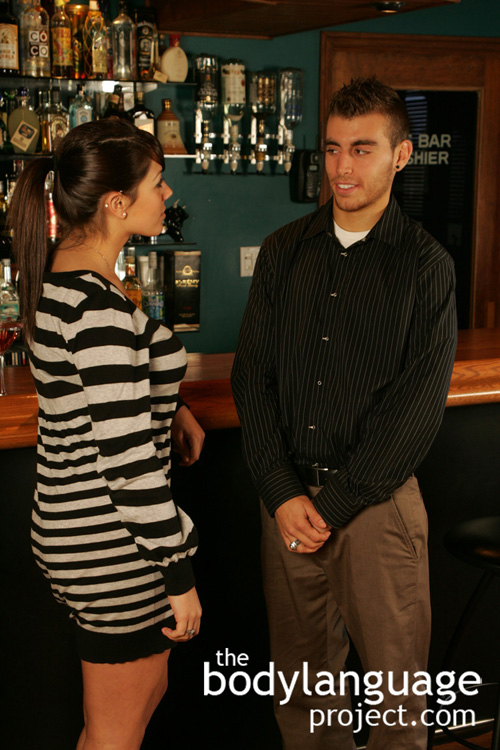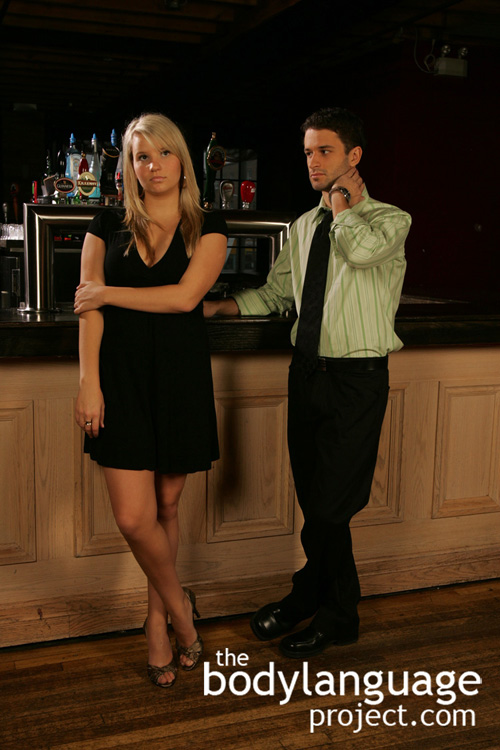Initially when people meet there is apprehension. In today’s day and age this attitude is vestigial since most people are agreeable and sociable. It wasn’t always like this as our evolutionary past is full of treachery. Two strangers meeting on foreign territory could have meant war, violence or theft. For women, the consequences could have been worse and include rape and kidnapping.
Holding a defensive posture, therefore, is a natural innate disposition and when people meet we should expect them to hold indications of timidity, at least initially. When two low ranking individuals meet they would naturally hold at least one posture that indicates that they are closed or protective. Having their arms or legs crossed at the ankles are two of the more common gestures. Those with higher rank will naturally express fewer closed postures initially when compared to those of lower rank. By the way, while we might feel rank in society is of no consequence, this couldn’t be further from the truth. As we are a capitalist society we are all more than aware of our relative standing in the world so our rank is well known to us.
Even children understand they rank low in the hierarchy of the world. However, in new environments it’s normal for even adult bodies to tense up and show certain levels of awkwardness. When two strangers meet, they will have their arms folded across their chest or perhaps in a pocket and their legs will be crossed at the ankle. This depends entirely on their level of comfort related to the novelty of the environment and their perceived status in relation to the other people present.
As the discussion continues between stranger, the feet are most likely the first to separate and uncross at the ankle, which will then be placed “at attention”, meaning together separated by a few inches and on the same plane. This will occur in unison with common dialogue, if no such rapport is built, the conversation can turn even more awkward and the bodies may tense and seek methods to exit the conversation.
Next, the arms will become more animated and be used to colour their language, essentially losing their rigidity. The palms will be made more visible and be flashed palm-up in conversation showing honesty and openness. Next, the arms will remain uncrossed and become more active in the conversation showing comfort, be placed in pockets showing some residual reservation or be placed on the hips showing dominance if one or the other discovers they have a higher status. Next, and if general agreement is established, one foot might be extended toward the other person rather than an exit.
If one person fails to open up, usually both wont, as mirroring each other is also part of the natural process. In rare occasions, one person will open up, and the other will not, showing one-way agreement or that one person is generally more open minded and easy to please than the and the other. Finally, the distance between the two might be reduced by taking a step forward, or brief touching might take place in safe zones such as the forearm or elbow.






